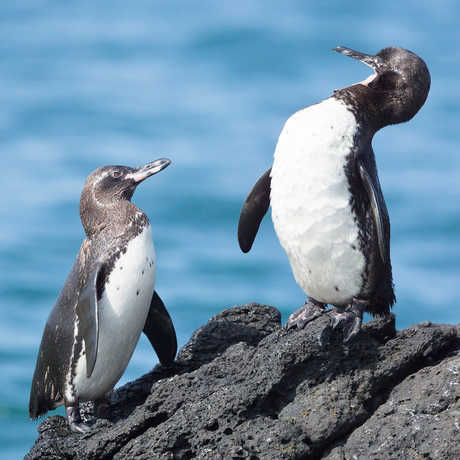Science News
Scientists Use Rovers to Get a Little Closer

Scientists want to study animals’ health and behavior in order to protect them in the wild. But often, observing wildlife can have ill effects, including stress that can cause animals to act erratically, flee, or even fail to breed.
Researchers frequently tag animals to keep track of them from a distance, but the capturing and tagging itself can cause the animals anxiety. So the University of Strasbourg’s Yvon Le Maho and his colleagues tried a different approach to tagging penguins and elephant seals in the wild—rovers. (Eat martian dust, Curiosity!)
Le Maho and his team first tested the stress in breeding king penguins when humans approached, then compared it to their reaction when a remotely operated vehicle (a.k.a. rover) approached. The scientists found that stress responses (heart rate and behavior) of these penguins were significantly lower and shorter in duration when the rover approached them compared to when human researchers approached. In addition, when the rover stayed still, the penguins further relaxed—their heart rate and behavior rapidly returned to normal.
The researchers then tested the rover with southern elephant seals and the pinnipeds allowed the rover to approach their heads and their tails—something that humans have not been able to achieve without significant reaction from elephant seals. (See and listen to the seals’ and penguins’ reaction to the rover in this video.)
Finally, the team camouflaged the rover with a penguin model (see image above—so cute!) and tested it on even more shy emperor penguins. The emperor penguins allowed the rover to approach very closely and some chicks and adults even vocalized at the camouflaged rover.
The research is published this week in Nature Methods and the authors hope that rovers may prove a less invasive and stressful way to collect data on these species, and may be adapted in the future for uses beyond electronic identification of terrestrial birds and animals.
Next headline will read: Penguin-bot Spies Invade Colony!
Images: Le Maho, et. al.


